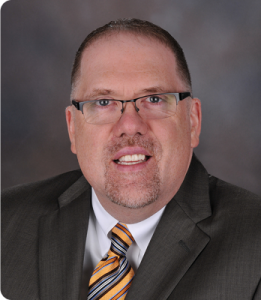There’s been a necessary focus lately on the growing demand for quality foster families.
We can never understate this need. Supporting those opening their hearts and homes to vulnerable, traumatized children has never been more important. It’s also challenging. As a former foster parent, I fully understand the emotional rollercoaster that comes with embracing these kids — especially older youth.
But I also came to understand that my anxiety was nothing compared to that of the children sharing my home.
The stories of instability, turmoil and uncertainty common to these children explained why most struggled to control their emotions and behavior. Even in the most trying of circumstances, you could also see their vulnerability, their heartache and their fear about the future.
Whether it was a summons to the school, holes punched into doors and walls, or a police officer on my front porch, I asked myself … could it have been different for this child?
In most cases, I think the answer is an unqualified yes.
Most data makes clear that roughly 75 percent of children known to the child welfare system are involved due to neglect – not abuse. Their families often struggle with complex, chronic and – in many cases – multi-generational challenges like poverty, unmet mental health needs and social isolation driven more by zip code than life choices. This all creates real hurdles in parents’ capacity to successfully care for their children.
I’m convinced if these families were engaged in services earlier, their stories might be drastically different.
Our challenge should not be building a system that can care for children once they’ve been removed, but rather on what it takes to alter the likelihood that children have to be separated from their parents facing extremely difficult situations.
Children’s Home Society of Florida, where I serve as CEO, is one of the state’s oldest, largest provider of case management services for children in foster care. One might reasonably wonder if the idea of drastically reducing the number of children in foster care makes me nervous.
Far from it. We have an ambitious aspiration: ending the need for foster care as we know it.
At the most basic level, we’re working to keep more families safe, strong and together by meeting parents at the crossroads of their struggles and successes – before small problems turn into big problems, and a preventable crisis demands government involvement.
Despite our best intentions, current practice misses what research tells us. Separating children from their parents increases risk factors for poor outcomes related to school success, depression, anxiety, anti-social behaviors, health and more. Brain science makes clear that trauma resulting from family separation affects brain development, emotional growth and the ability to form attachments with others – building blocks of successful functioning as an adult.
Earlier this year, Congress sent a clear message they, too, believe children belong with their families. The passage of the Family First Prevention Services Act shifts funding priorities, creating new opportunities to keep more children safe at home by supporting their families.
In Palm Beach County, we’re already actively working toward increasing support for vulnerable families. We currently serve more than 500 local kids – who, without our services, might otherwise enter foster care – through in-home case management. Specifically, we are delivering the crucial services families need to work through their challenges so they can stay safely together.
Beyond case management, our highly successful Bridges program, funded through the Children’s Services Council of Palm Beach County, empowers parents to build strong foundations for their families as well as strong support systems among one another. The results of the program have been astounding, as we have seen a significant drop in the number of calls to the child abuse hotline in the neighborhoods where Bridges operates.
In partnership with the Department of Children and Families, community based care agencies throughout the state – including ChildNet here in Palm Beach County — and many other entities and stakeholders, Children’s Home Society of Florida looks forward to keeping more families safe, strong and together as we continue to improve outcomes for kids.
Originally posted by: Palm Beach Post







